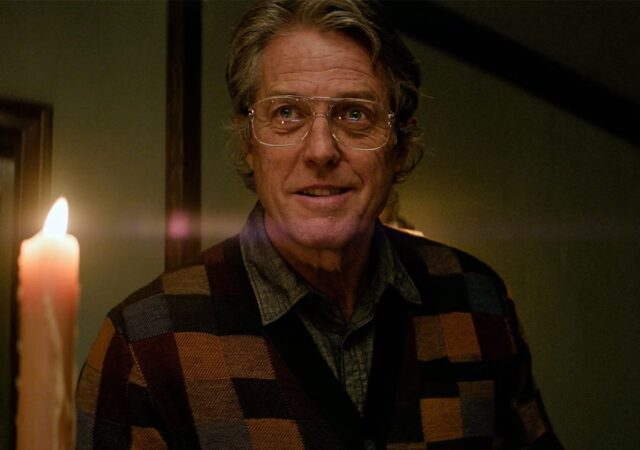A mere 33 years ago, Ukraine and Russia were united under a single banner. Today, they are locked in a brutal conflict that has claimed countless lives and reshaped the geopolitical landscape. The ongoing Russo-Ukrainian war began in 2014 when Russia annexed Crimea from Ukraine.
The war reached a tipping point when Russia launched a full-scale invasion of Ukraine on February 24th, 2022, leading to one of the most devastating conflicts in European history. Russian president Vladmir Putin declared the Donetsk and Luhansk regions of eastern Ukraine independent and invaded the same. These regions are formally a part of Ukraine, but, de facto, under Moscow’s rule due to separatist ideologies.
Putin called this invasion a special military operation and sent Russian troops into Ukrainian soil in the name of peacekeeping. The true intentions of this invasion, however, stem from a mix of strategic and ideological motivations which include restoring Russian influence over former Soviet regions and preventing Ukraine’s NATO expansion which Russia views as a security threat due to their shared border.

This war so far has claimed the lives of over a hundred thousand people on both sides even by the most conservative estimates. It saw its most recent and major escalation when Ukraine initiated a surprise military incursion in Russia’s Kursk region on August 6th. This offensive marks the largest incursion into Russian soil since WW2. The attack came as a surprise to Russia and Ukraine’s western allies; it was a bold move that has put on hold discussions about a stalemate and possible negotiations involving concessions to Russia.
Western allies were kept in the dark about this attack because they believed certain red lines cannot be crossed. For two years, Washington has prevented Ukraine from using the weapons it supplied to strike into Russia. A stance criticized by Ukrainian president, Volodymyr Zelenskyy, who is trying to reverse Washington’s ban on using long-range missiles on Russian territory.
Despite that, Moscow never predicted an incursion into Russian soil as Ukrainian forces had their hands full with Russian troops in the Donbas region. On the flipside, Russia also focused its soldiers on Donbas while Kursk was guarded mostly by conscripts, increasing the chances of a successful incursion by Ukraine. Although it is currently not possible to verify the extent of Ukrainian control, Ukraine’s military chief, Oleksandr Syrskii, claimed last Tuesday that his forces had advanced across 1,263 sq km and captured 93 settlements of Kursk.
Now, what may be the possible motivations for Ukraine to have called for such an unforeseen incursion?
PR Victory

“Russia brought war to others, and now it is coming home”
The Ukrainian side has been fighting against a Russian side whose military is stronger than that of Ukraine on all fronts. However, the Ukrainian people have been ready to fight this war since the very beginning with a great majority of the population in favor of a war to protect their lands. But to believe in a cause, people need to see a chance of success. And 2024 has not been helpful for Ukraine in that regard, where the already outnumbered Ukrainian side was critically low on ammunition and air defenses. On top of that, Donald Trump has been threatening to cut US aid to Ukraine if he’s re-elected.
Russia has been more aggressive in carrying out airstrikes lately, striking even civilian targets. Since the beginning of 2024, Russia has damaged or destroyed around half of Ukraine’s remaining energy generation capacity, leading to rolling blackouts.
Recent reports show that almost one-third of Ukrainians are now prepared to make territorial concessions to Russia if this brings the war to an end. These developments have brought the morale of Ukrainian troops and people to an all-time low.

The Kursk incursion gives fresh hope to Ukranians and their western allies through demonstrating that the Ukrainian military is capable of launching a major offensive into Russian territory. This also helps undermine Putin’s narrative of the war as the facade of a secure state Putin had built crumbled in the face of a surprise attack. It casts further doubts on Putin’s unwritten social contract that most Russians could get on with their usual lives even as he waged war. This incursion is a stark reminder that the war is not as distant as it may seem to many Russians.
Some Ukrainian troops disregarded OPSEC (Operational Secret) rules and have been publicizing their offensive through social media. They’ve posted videos and selfies from Russian towns like Sudzha or villages like Poroz and Dmitriukov, bragging about how they have finally taken the fight to Russia, giving us further reason to believe that Ukraine wants this incursion to restore people’s belief in Ukraine’s ability to win as well as trust in Kyiv’s political and military leadership.
Bargaining chip
Delegations from Ukraine and Russia were scheduled to hold talks in Doha this month in order to negotiate a landmark agreement halting attacks on energy infrastructure on both sides. Russia has pounded Ukraine’s power grid with missiles and drone strikes that have led to nationwide blackouts that are affecting people far away from the frontlines. Meanwhile, Ukraine has carried out long range drone attacks, reducing Russia’s oil refining capacity by an estimated 15% and raising gas prices around the world.
The planned summit could have led to a partial ceasefire and pave the way for more comprehensive solutions. But Putin has held firm in saying that Russian troops will not leave the Ukrainian territories they’ve already attacked, leaving Ukraine with unfavorable conditions during negotiations.
This is where the Kursk incursion gives Kyiv important new leverage in bargaining over a settlement. The territory and hundreds of captured Russian conscripts could be an important bargaining chip for Ukraine. But as tempting as it is to believe, some analysts opine that Ukraine would have needed to gain control of strategically important Russian assets like the Kursk Nuclear Power Plant in the territory to make it a significant factor in negotiations. Ukrainian forces currently have little prospect of attaining it now that Russia has mobilized forces to defend the plant.
Strategic Move
Some analysts say that Kyiv aims to draw Russian forces away from the heavily contested front lines in eastern and southern Ukraine through the incursion into Kursk. This could further make way for a decisive Ukrainian offensive on a more strategic location where Russian troops have been thinning.
But Russia so far has only moved small forces to the Kursk Oblast and has instead moved further into Ukraine, recently claiming to have captured a small town in eastern Ukraine called Niu-York.
While the strategic purpose might not have been served, the weak Russian response has given the Ukrainian forces the scope to cause further damage as they have have either destroyed or damaged all three of the bridges over the Seym River in western Russia with the aim to disrupt the flow of resources to the front lines.
What Comes Next
As Ukraine’s incursion enters into its third week, it is difficult to predict what comes next due to the many factors at play. If it’s a decisive move leading to Ukraine’s victory, or a futile gambit remains to be seen. What’s for sure is, it is a symbolic move signaling that Ukraine will not be limited by its borders in its efforts to repel Russian aggression.






















